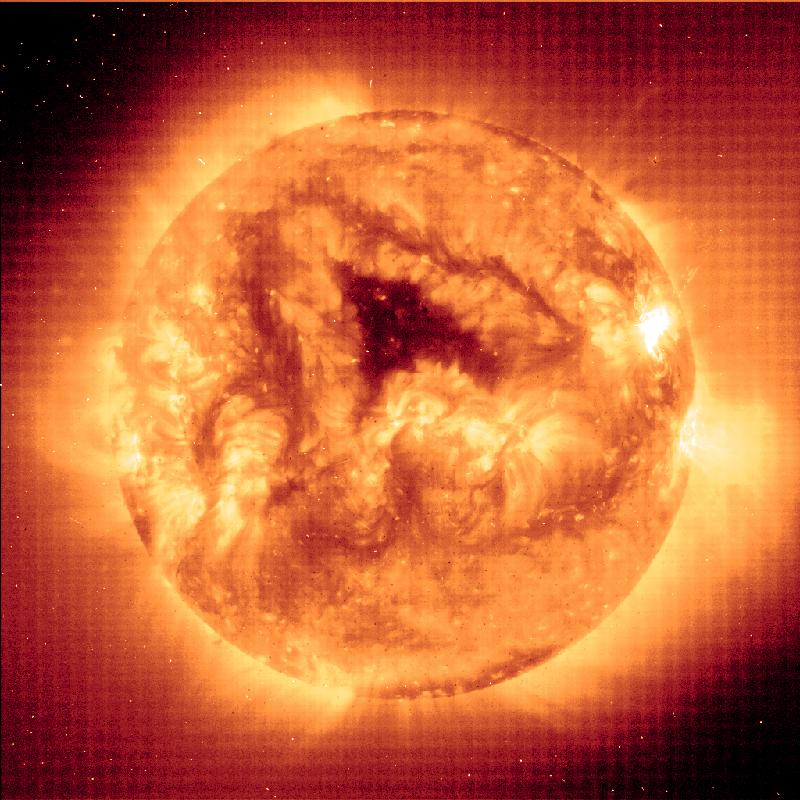 The Sun is not a constant, unmoving mass of plasma and energy. It is constantly active, sometimes releasing sudden amounts of energy and displaying different kinds of solar activity. These patterns of activity are believed to be driven by the surface magnetism of the Sun, underneath which rotation and convective flows arise. The amount of solar activity is sometimes associated with the number of sunspots, or cooler, darker, regions on the Sun's surface. Though different kinds of solar activity are known, the forces behind these activities and their relationship with each other still remain a puzzle for scientists and physicists.
The Sun is not a constant, unmoving mass of plasma and energy. It is constantly active, sometimes releasing sudden amounts of energy and displaying different kinds of solar activity. These patterns of activity are believed to be driven by the surface magnetism of the Sun, underneath which rotation and convective flows arise. The amount of solar activity is sometimes associated with the number of sunspots, or cooler, darker, regions on the Sun's surface. Though different kinds of solar activity are known, the forces behind these activities and their relationship with each other still remain a puzzle for scientists and physicists.
One well-known and well-observed type of activity are solar flares. Solar flares usually take place near sunspots. These flares have an increased luminosity, with temperatures reaching up to 11 million Kelvins or 20 million degrees Fahrenheit. They can be easily seen in X-rays and H-alpha rays. Another type of activity are coronal mass ejections. These phenomenon usually accompany strong flares. They can eject a huge amount of material and plasma into the solar wind, where it can reach the Earth and have an effect on the Earth's magnetic activity. Filaments, on the other hand are features of the corona that are made up of dense materials. Their eruption sometimes causes a coronal mass ejection or an enormous solar flare. The weaker and less violent cousins of solar flares are prominences, relatively cool sheets of gas from the active regions of the corona. These either hang inactive, or explode violently into space.
The nearness of the Sun permits us to study the complex activities at its surface in great detail. Solar wind sometimes carry solar material like protons and electrons to be picked up by spacecraft or other devices. The solar wind can also affect the Earth's magnetic field, sometimes producing a shockwave called the Bow Shock, where it can also be further studied.
